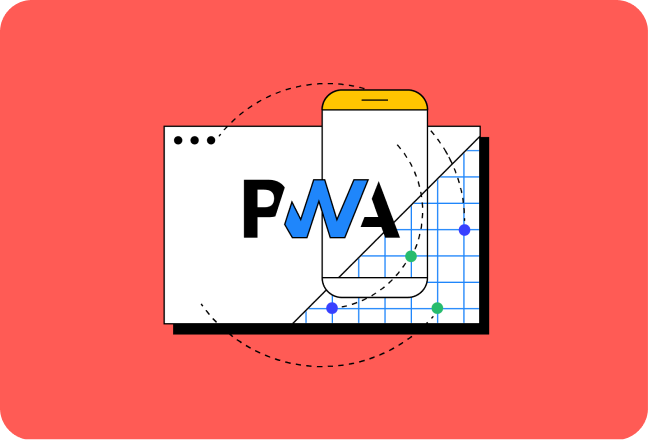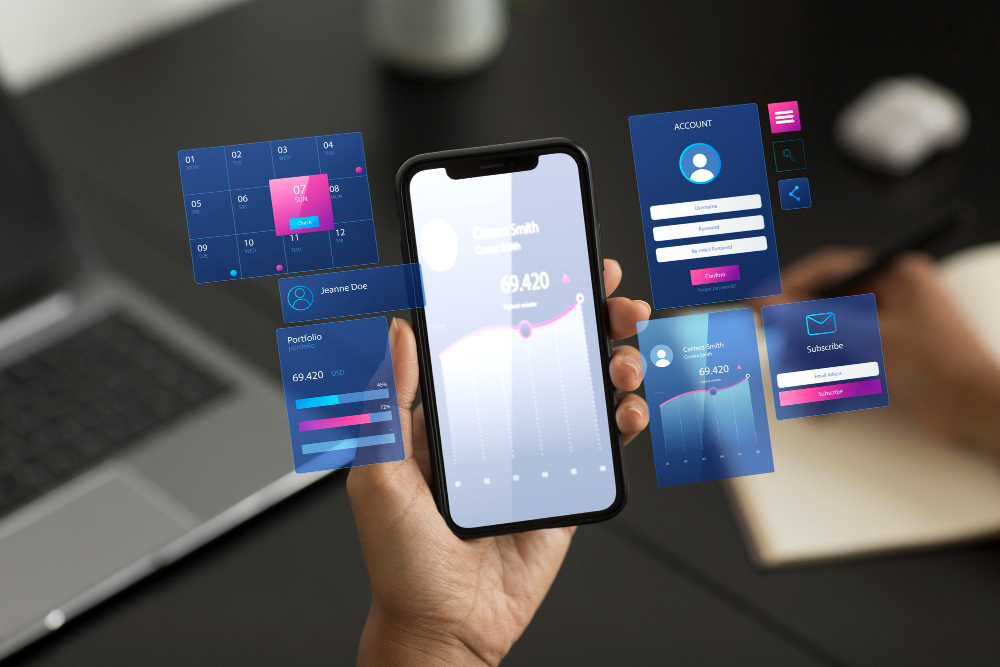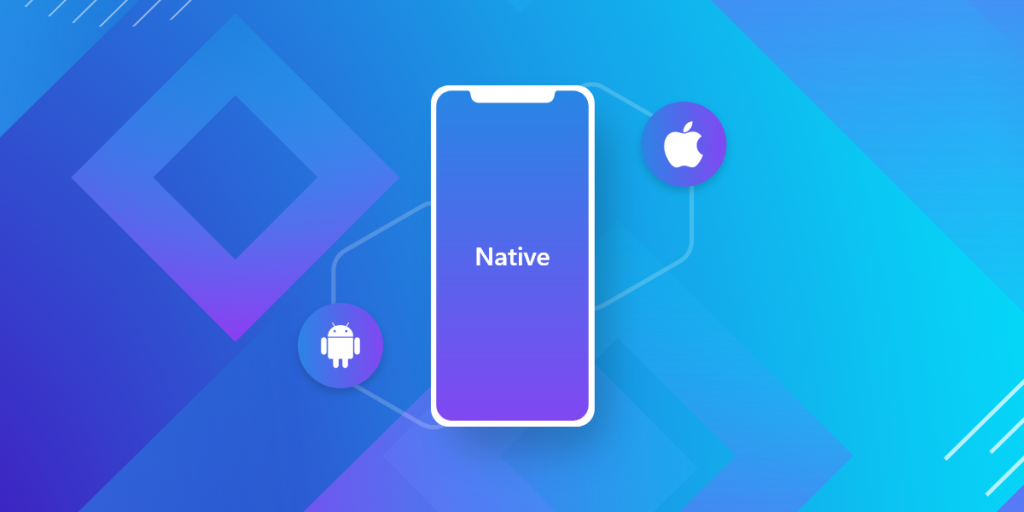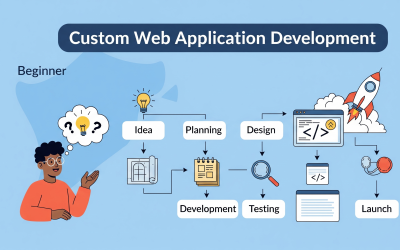In the current digital world, where things are moving at a very fast rate, businesses and developers alike are searching for the most efficient and effective way to deliver seamless user experiences. The Progressive Web Apps (PWAs) vs Native Apps debate is one that captures this quest. There are unique advantages of both approaches, but they are also different in terms of performance, development complexity as well as user engagement.
In this blog post, we will investigate key differences between Progressive web apps and Native apps such as their performance and try to identify which option could work best for you depending on your needs. Understanding PWA vs Native can be crucial to any developer, business owner or technology enthusiast when it comes to making a solid decision for future projects.
What are Progressive Web Apps (PWAs)?

A Progressive Web App (PWA) is a web app that uses modern web capabilities to deliver an app-like experience to users. PWAs are accessible from a web browser but support many of the functions included in native mobile apps like offline functionality, notifications and being installable through a home screen icon. It is the perfect mix of web and mobile application features, which makes PWAs the first budget-friendly for developers along with heavy bag of features for users.
Key features that distinguish Progressive Web Apps (PWAs) from traditional web apps:
1. Offline Functionality: PWAs can operate offline or with poor internet connectivity, thanks to service workers that cache essential resources. This enables users to access previously viewed content even without an active internet connection.
2. Linkable: PWAs can be accessed directly via a URL without any setup or installation. This makes sharing specific content easy, unlike in native mobile apps where sharing is more complex.
3. Installable: Users can install PWAs on their device’s home screen, offering quick and easy access. This provides a user experience like native apps.
4. Search Engine Optimization (SEO): PWAs are designed to be more discoverable by search engines. They follow global standards, such as HTTPS support and a web app manifest, making it easier for search engines to index and rank their content.
5. Responsive: PWAs use modern web technologies to ensure their interfaces are responsive, providing a smooth experience across various devices and screen sizes.
6. Built-in Security: PWAs use HTTPS to encrypt data between the app and the server, enhancing security. They also employ service workers and app manifests to control how the app is launched and displayed, reducing exposure to security threats.
7. Cost-effective Development: PWAs are built using web technologies like HTML, CSS, and JavaScript, making them a more cost-effective alternative to developing native apps for different operating systems. This reduces web development time and associated costs.
8. Superior Performance: PWAs are designed to be lightweight and efficient, resulting in faster load times, seamless animations, and better overall performance compared to standard web apps. They use progressive enhancement techniques to ensure compatibility across various browsers and devices.
Major Technologies Used in PWAs

Now since we have talked about the important features of PWAs, let’s see what the major technologies are used in developing such applications:
- Service Workers: These background scripts enable offline functionality, background sync, and push notifications, enhancing the app’s performance and reliability.
- Web App Manifest: This JSON file provides metadata about the app, such as its name, icons, and start URL, enabling it to be installed on a user’s home screen.
- Responsive Design Frameworks: Technologies like CSS3, Flexbox, and Grid Layout help create responsive and adaptive interfaces that work seamlessly across different devices.
- JavaScript Libraries and Frameworks: Popular libraries and frameworks like React, Angular, and Vue.js are often used to build dynamic and responsive PWAs.
What are Native Apps?

Now , since we have discussed the PWAs, let’s discuss the traditional Native Applications.
Native apps are applications developed specifically for a particular mobile operating system, such as iOS or Android. They are built using platform-specific programming languages—Swift or Objective-C for iOS, and Java or Kotlin for Android. These apps are downloaded and installed through respective app stores (Apple App Store or Google Play Store) and are designed to take full advantage of the device’s hardware and software capabilities, offering superior performance and a rich user experience. Unlike Progressive Web Apps (PWAs), native apps require installation and are not accessible via web browsers.
Here are some features that set Native Apps apart:
1. Optimal Performance: Native apps are tailored for their specific platforms, which allows for fast and responsive interactions. They can efficiently use device resources, resulting in smoother performance compared to web-based apps.
2. Access to Device Features: Native apps have direct access to device features like the camera, GPS, accelerometer, and contacts. This enables a more integrated and functional user experience.
3. Enhanced User Experience: Native apps adhere to platform-specific design guidelines, offering a more intuitive and familiar user interface. This ensures a consistent and high-quality user experience.
4. Push Notifications: Native apps can send push notifications via the operating system’s notification service, keeping users engaged and updated about new content or changes.
5. Security: Native apps leverage the security features of their respective platforms, including encrypted data storage, secure data transmission, and regular security updates.
6. Offline Capability: Native apps can store data locally on the device, allowing users to access content and perform tasks even without an internet connection.
Also read: 5 Tips to Find and Hire the Best Mobile App Developers for Your Project
Major Technologies Used in Native Apps
Now, talking about the technologies that the Native Apps utilize, below are some of the widely used ones:
- Programming Languages: Native apps are developed using platform-specific languages—Swift and Objective-C for iOS, Java and Kotlin for Android.
- Development Tools: Each platform provides its own integrated development environment (IDE)—Xcode for iOS development and Android Studio for Android development. These tools offer a range of functionalities for coding, debugging, and testing native apps.
- Software Development Kits (SDKs): Native app development relies on platform-specific SDKs, which provide libraries and tools to access device features and create robust applications.
- User Interface (UI) Frameworks: Native apps use UI frameworks such as UIKit for iOS and Jetpack Compose for Android to create visually appealing and responsive interfaces.
- Cross Platform Development: By using technologies like Flutter and React Native, we can even develop Native Apps that can run on both android and ios without the need of writing the code twice.
Progressive Apps vs Native Apps: Key Differences
PWAs deliver a user-friendly experience with easy access and offline capabilities. On the other hand, native apps often provide a smoother experience with more advanced features. The best choice ultimately depends on the app’s complexity and the specific needs of its users.
To help you decide which type of app is better for your needs, we’ve compiled a comparison of the main advantages and disadvantages of each:
| Feature | Progressive Web Apps (PWAs) | Native Apps |
| Installation | No installation required; can be added to the home screen directly from the browser. | Installation required via app stores like Apple App Store or Google Play Store. |
| Compatibility | Works seamlessly on any platform and mobile device, providing a consistent experience. | Designed specifically for one OS platform (iOS or Android) and may need updates for new OS versions. |
| Development Costs | Requires only one development team using standard web technologies. | Requires separate development teams for each platform, increasing costs. |
| Shareability | Can be easily shared through a brief URL link, enhancing accessibility | Accessible only via app stores, making direct sharing less straightforward. |
| Offline Mode | Offers limited offline functionality using cached resources. | Fully functional in offline mode, leveraging local storage and device capabilities. |
| Updates | Automatically updates, ensuring users always have the latest version. | Users must manually update through app stores, which can delay new features’ adoption. |
| Security | Provides HTTPS encryption for secure communication. | Implements additional security layers using built-in device components, enhancing overall security. |
Progressive Web Apps vs Native Apps Performance
When choosing between Progressive Web Apps (PWAs) and Native Apps, performance is a crucial factor. Users today demand fast, responsive, and reliable applications, whether they’re browsing a web app or using a native app on their device. In this section, we’ll explore the key aspects of performance, including speed and responsiveness, offline capabilities, battery usage, and more.
Speed and Responsiveness
Speed and responsiveness are critical for a positive user experience. PWAs are designed to be fast and efficient, leveraging modern web technologies to ensure quick load times and smooth interactions. They use service workers to cache assets and serve them instantly, even on slower networks. However, native apps generally have an edge in performance. Because they are built specifically for a platform (iOS or Android), they can fully utilize the device’s hardware and software, resulting in superior speed and fluidity. Native apps often deliver smoother animations and quicker response times, providing a more seamless user experience.
Offline Capabilities
Offline capabilities are a significant advantage of PWAs. Through service workers, PWAs can cache essential resources, allowing users to access previously loaded content even without an internet connection. This feature is beneficial for users in areas with unreliable connectivity. Native apps, however, have more robust offline functionality. They can store data locally on the device, enabling full app usage offline. This capability is crucial for apps that require extensive offline access, such as productivity tools or games.
Battery Usage
Battery usage is another important factor to consider. PWAs tend to be more battery-friendly because they are lightweight and do not require intensive background processes. They run within the web browser, which can help conserve battery life. On the other hand, native apps can be more demanding on battery life due to their deeper integration with device hardware and continuous background activities, such as location tracking or push notifications. However, developers of native apps often optimize them for better battery performance, striking a balance between functionality and power consumption.
Access to Device Features
Native apps have full access to all device features, such as the camera, GPS, accelerometer, and more. This deep integration allows them to offer advanced functionalities that PWAs cannot fully match. While PWAs can access some device features through modern web APIs, they are still limited compared to native apps. For instance, native apps can seamlessly use biometric authentication (like Face ID or fingerprint scanning) and interact with other apps on the device, providing a more integrated user experience.
Security
Security is a top priority for both PWAs and native apps. PWAs use HTTPS to ensure secure communication between the app and the server, protecting user data from interception. They also benefit from the security measures implemented by web browsers. Native apps, however, can offer additional layers of security. They can use platform-specific security features, such as encrypted local storage and secure keychains, to protect sensitive information. Furthermore, app stores perform rigorous security checks before allowing apps to be published, adding an extra layer of trust.
These are some of the parameters on which we can judge the performance of Native Apps and PWAs, helping us decide which is better according to our use case in terms of performance.
Pros and Cons of PWAs
Progressive Web Apps (PWAs) have been gaining traction in the tech world due to their unique blend of web and app capabilities. They offer several benefits, but they also come with a few drawbacks. Here, we’ll dive into the advantages and disadvantages of using PWAs.
Top 6 Benefits of Progressive Web Apps
PWAs have become a great alternative to traditional mobile apps, offering many benefits for users and developers. Offline Mode
- Offline Mode – PWAs use service workers to cache assets, allowing them to work offline. This is helpful for businesses with product catalogs, as users can browse products without an internet connection. This offline capability increases user engagement and can boost revenue.
- Improved Performance – PWAs use service workers to improve performance. By controlling asset caching, PWAs load faster and provide smoother user interactions than traditional web apps. This speed and responsiveness enhance user satisfaction.
- No Installation or Manual Updates Required – PWAs don’t need to be installed from an app store. Users can access them directly through a URL, like mobile.twitter.com, without installation steps. Updates are automatic, so users always have the latest features and bug fixes without manual updates. This easy process reduces friction for users and lowers support requests for companies.
- Platform-Specific Features – PWAs can use various platform-specific features, enhancing their functionality and user experience. They can be added to the home screen, send web push notifications, work in full-screen mode, adjust display orientation, use location data, and more. This versatility allows PWAs to provide a native-like experience on different devices and operating systems.
- Low Data Usage – In areas with expensive mobile data, PWAs are beneficial due to their smaller size and efficient caching. For example, Tinder’s PWA is much smaller than its native Android app, reducing data use and improving accessibility for users with limited data plans.
- App Store Independence – PWAs don’t depend on app stores like Apple App Store or Google Play Store for distribution. This is good for small businesses and independent developers, as it eliminates app store fees and compliance with store policies. It also gives developers more freedom in app development and deployment, allowing them to innovate without restrictions.
Disadvantages of Progressive Web Apps
PWAs have many benefits, but they also have some drawbacks that developers and businesses should keep in mind. Compatibility with iOS
- Compatibility with iOS – PWAs work on iOS devices from version 11.3 onwards, but they can’t access important features like Touch ID, Face ID, ARKit, Bluetooth, and battery info. They also have issues with older iOS devices, limiting their use in Apple’s ecosystem.
- Issues with Legacy Devices – Older mobile devices with outdated web browsers might not fully support PWAs. This can lead to user experience problems and customer complaints, making it hard to adopt PWAs in some markets.
- Functional Limitations – PWAs can’t do everything native apps can. Their performance may be lower, especially for tasks needing a lot of processing or battery efficiency. JavaScript, being a single-threaded language, limits access to advanced device features like Bluetooth and ambient light sensors.
Pros and Cons of Native Apps
Let’s look at the main advantages and disadvantages of using native apps.
6 Advantages of Native Apps
- Optimal Performance – Native apps are made for a specific platform (iOS or Android), so they can use the platform’s special features. This leads to better performance, smooth animations, and fast responses, which improve the user experience.
- Full Access to Device Features – Native apps can use all the hardware features of a device, like GPS, camera, and accelerometer. This allows developers to create advanced functions, such as augmented reality, better camera controls, and easy integration with other apps.
- Enhanced User Experience – Native apps follow the design rules of each platform (Material Design for Android, Human Interface Guidelines for iOS), ensuring a consistent and user-friendly interface. This makes the app look and feel familiar to users, enhancing their experience.
- Offline Functionality – Native apps can store data on the device, so they can work without an internet connection. This is important for apps that need to access data all the time, like productivity tools, games, or media apps.
- App Store Presence – Being on app stores like the Apple App Store and Google Play Store makes it easier for users to find the app. App stores provide a trusted place for users to download apps, which can increase credibility and attract more users.
- Push Notifications – Native apps can send push notifications directly to users’ devices, even when the app is not open. This helps businesses keep users engaged, provide personalized updates, and improve user retention with timely notifications.
6 Disadvantages of Native Apps
- High Development Costs – Creating native apps needs separate teams for each platform (Swift or Objective-C for iOS, Kotlin or Java for Android). This makes it more expensive and time-consuming than using cross-platform options.
- Platform Dependence – Each platform (iOS and Android) needs its own development efforts, leading to separate codebases. Updates and bug fixes must be done separately for each, which can be hard to manage and costly.
- App Store Approval Process – Publishing native apps involves a strict approval process by Apple and Google. This can delay the launch and updates of apps, especially for time-sensitive releases.
- Limited Reach – Native apps only work on specific platforms (iOS or Android), so they miss out on users with other devices. This limits the potential user base.
- Higher Barrier to Entry – Users must download and install native apps from app stores, which can deter them, especially if they are just trying out the app or use it infrequently.
- Version Fragmentation – Different versions of operating systems (iOS, Android) can cause problems. Developers need to make sure their apps work on all these versions, which requires regular testing and updates.
Conclusion – Progressive Apps vs Native Apps
When deciding between Progressive Web Apps (PWAs) and Native Apps, it really depends on your specific needs and priorities.
PWAs are great because they work on different platforms, are cheaper to develop, and are easy to update without needing app store approvals. They also work well offline, use less data, and are good for areas with limited internet. This helps keep users engaged.
Native Apps, on the other hand, offer better performance and full access to device features. They provide a smooth user experience that matches the platform they’re on. Native Apps are also easier to find in app stores and can send push notifications to keep users engaged. However, they cost more to develop and maintain, especially if you need to support multiple platforms. Plus, you must follow strict app store rules.
Choosing between PWAs and Native Apps depends on your resources, who you’re trying to reach, and how complex your app is. If you want broad accessibility, to save on costs, and to have the flexibility to update easily, PWAs might be the best choice. But if you’re focused on performance, using platform-specific features, and having a polished look and feel, Native Apps could be worth the extra effort and cost.
Understanding the pros and cons of each option will help you make the right choice for your app strategy. Both PWAs and Native Apps can be great solutions, depending on what you and your users need. If you are looking for the best Web and Mobile App Development Services, do contact us today!
FAQs
What are the main differences between PWAs and Native Apps?
PWAs are web applications accessible via a browser and can be installed on a device. They use web technologies and APIs to offer a cross-platform experience. Native Apps, on the other hand, are developed for specific platforms (iOS or Android) using platform-specific languages (Swift, Kotlin) and have full access to device features. Example of PWA is Spotify application on Computer and Example of Native App is Instagram.
Which is more cost-effective, Progressive Web Apps or Native App?
PWAs are generally more cost-effective because they use web technologies (HTML, CSS, JavaScript), allowing for a single codebase that works across multiple platforms. Native Apps require separate development for each platform (iOS, Android), increasing development costs.
Can a PWA replace a Native App?
PWAs can replace some functionalities of Native Apps, especially for content-focused or simpler applications. However, Native Apps still excel in performance, access to device features, and providing a platform-specific user experience.
How do PWAs perform compared to Native Apps?
PWAs offer good performance, especially in terms of speed and responsiveness. However, Native Apps generally provide better performance due to their direct access to device hardware and optimized code for specific platforms.
What are the limitations of PWAs?
PWAs have limitations such as restricted access to certain device features (like biometrics and advanced sensors) compared to Native Apps. They may also face compatibility issues with older browsers and have stricter performance constraints when handling complex tasks.



0 Comments